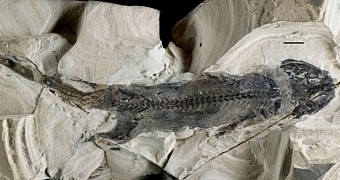The salamanders that walk the Earth in this day and age have one amazing ability: regrow missing limbs. In fact, their regeneration skills are way more impressive than Wolverine's or the Hulk's. More so given the fact that they are real and not fictional.
For quite a while now, scientists have been trying to figure out whether salamanders developed this regeneration ability of theirs in recent history, or if maybe it's a survival trick that they inherited from their long-lost ancestors.
By the looks of it, the second explanation is the one most likely to be true. Or so say researchers Nadia Fröbisch, Constanze Bickelmann and Florian Witzmann in a recent paper in the journal Proceedings of the Royal Society B: Biological Sciences.
The 300-million-year-old amphibian remains
In their paper, the scientists detail the discovery of the fossilized remains of an ancient amphibian in present-day Germany. The fossils, estimated to be about 300 million years old, were unearthed at a site in the country's northwest, Phys Org informs.
While studying these fossilized amphibian remains, identified as belonging to a species dubbed Micromelerpeton, the researchers found evidence that, at some point in its lifetime, this creature lost one of its original toes and simply grew a new one to serve as a replacement.
Thus, the scientists found the creature's anatomy included an extra partly fused toe. As detailed in the journal Proceedings of the Royal Society B: Biological Sciences, such anatomical quirks can also be observed in modern salamanders, many of which sport odd bumps, scars or digits that are fused together.
“We show that the 300-million-year-old temnospondyl amphibian Micromelerpeton, a distant relative of modern amphibians, was already capable of regenerating its limbs,” Nadia Fröbisch, Constanze Bickelmann and Florian Witzmann write in the Abstract to their paper.
“This demonstrates that the capacity to regenerate limbs is not a derived feature of modern salamanders, but may be an ancient feature of non-amniote tetrapods and possibly even shared by all bony fish,” the researchers go on to explain.
More questions raised than answered
If it is indeed true that ancient amphibians were capable of regrowing missing limbs or other body parts, there is one question that scientists are yet to answer: why is it that, of all the animals on the planet, modern salamanders are the only ones that still have this ability?
One possible explanation is that growing back limbs required going through loads of energy resources. However, it could also be that descendants of these ancient amphibians bid this ability its eternal farewell because they no longer saw any use for it. Hopefully, future investigations will solve this puzzle.
Why study this ability at all?
Well, apart from the fact that learning that ancient amphibians were able to grow back missing body parts is nothing short of awesome, the fact of the matter is that such investigations come with a hidden agenda. Simply put, researchers hope that their findings will revolutionize medicine.
More precisely, it is expected that, were science to gain a complete and thorough understanding of how modern salamanders put themselves back together after suffering various injuries, it might be possible to unlock this ability in humans. In other words, scientists are trying to come up with a way to get us to regrow our own body parts. Pretty cool, right?

 14 DAY TRIAL //
14 DAY TRIAL //